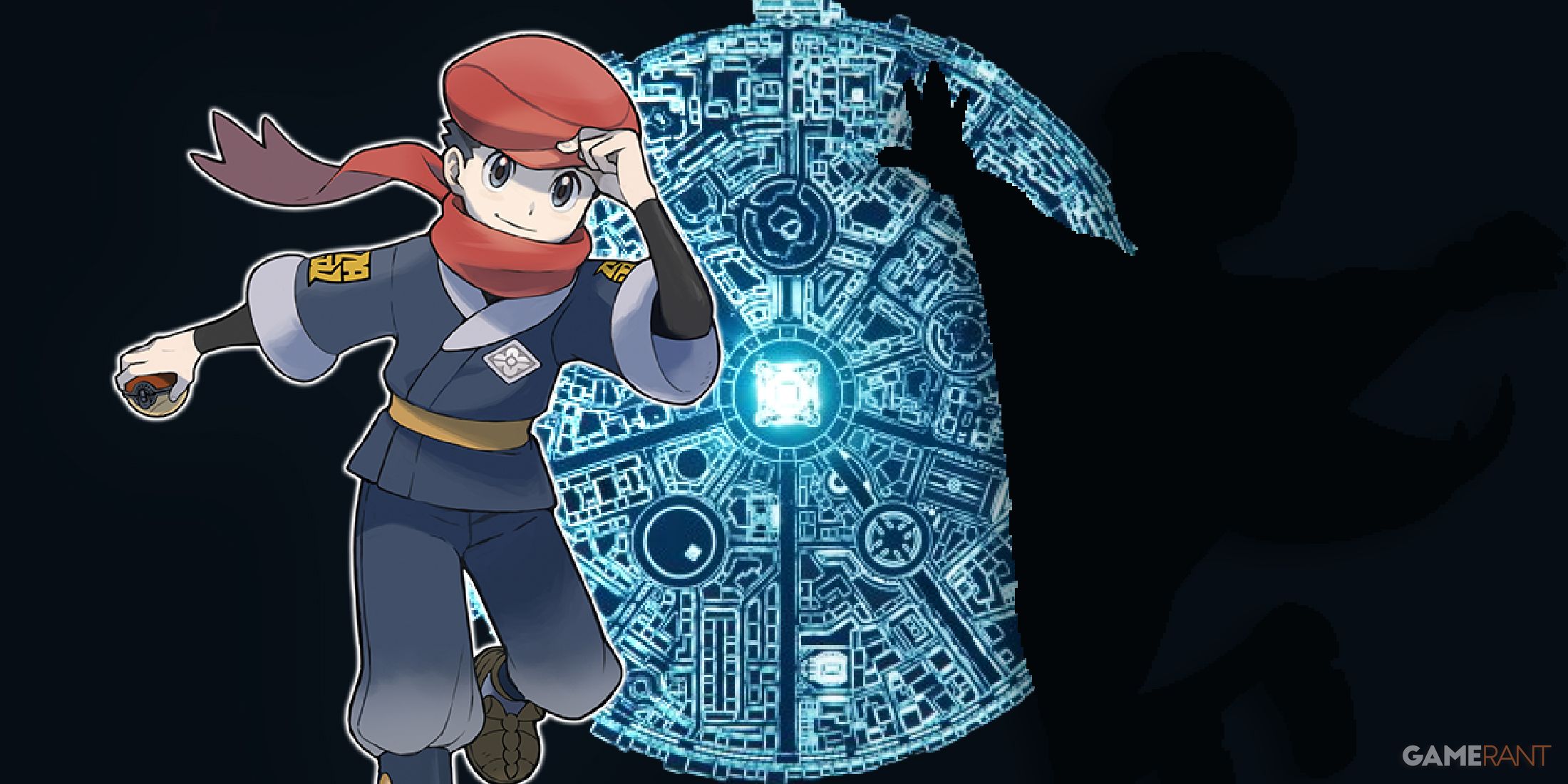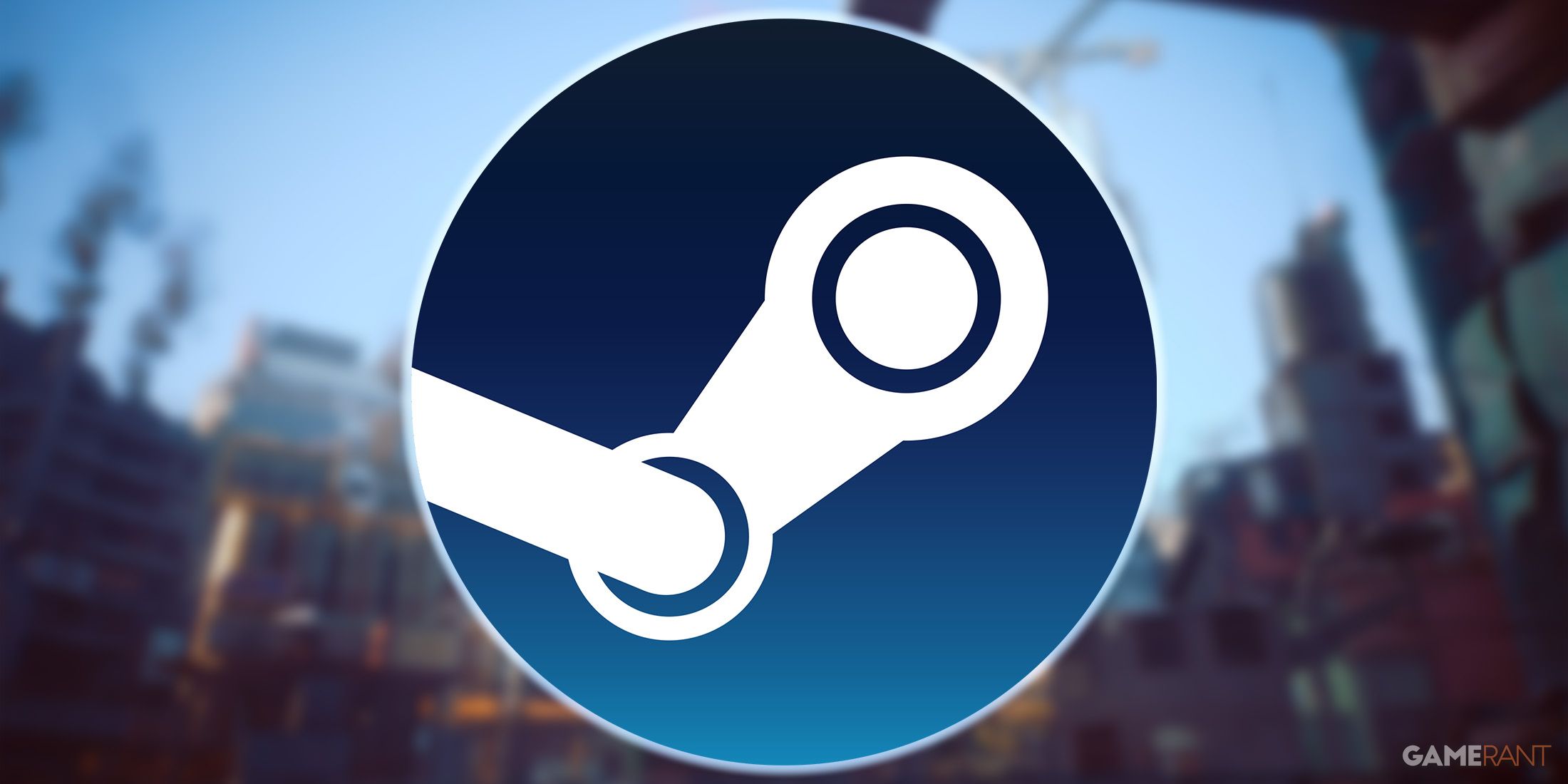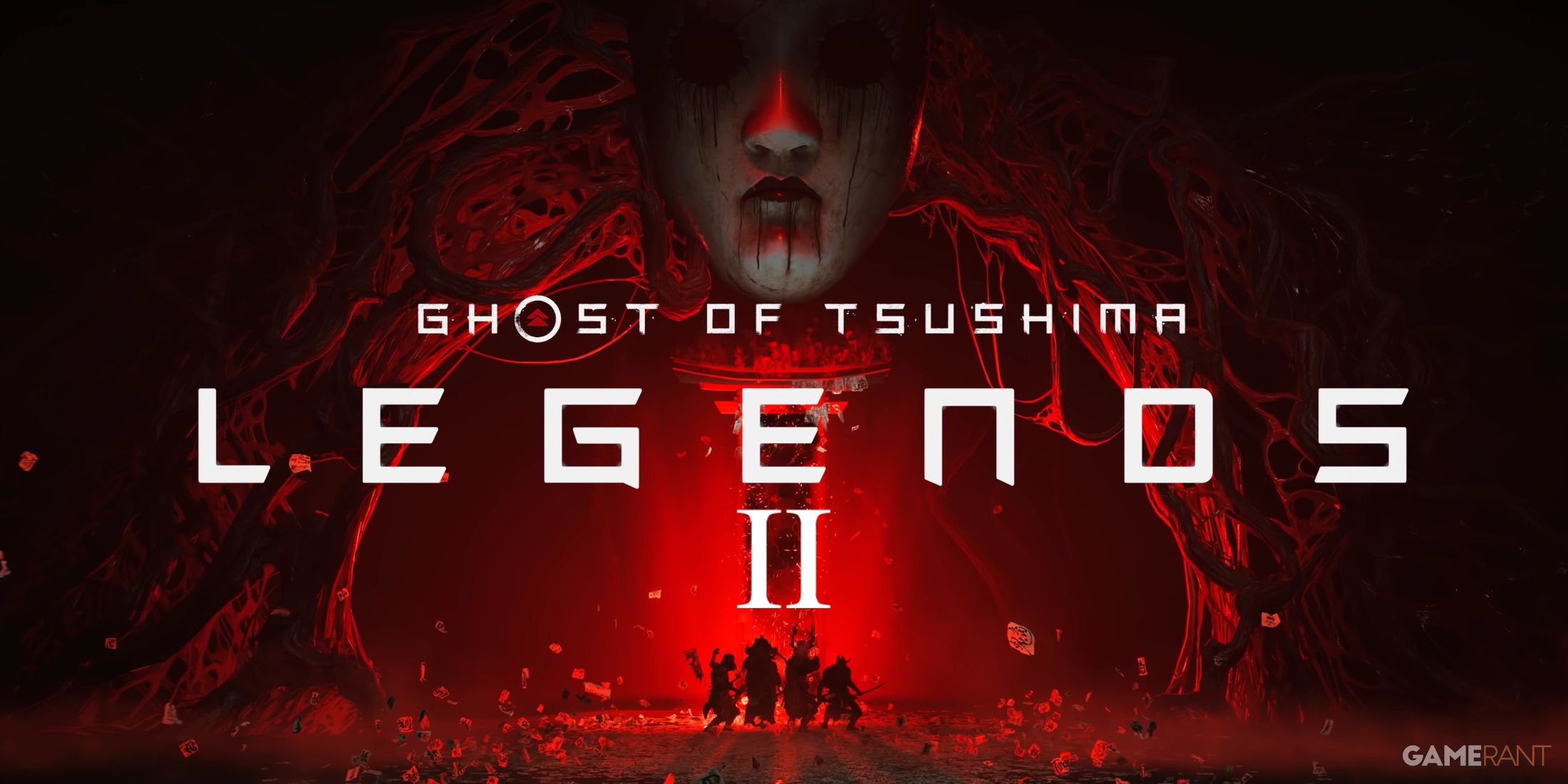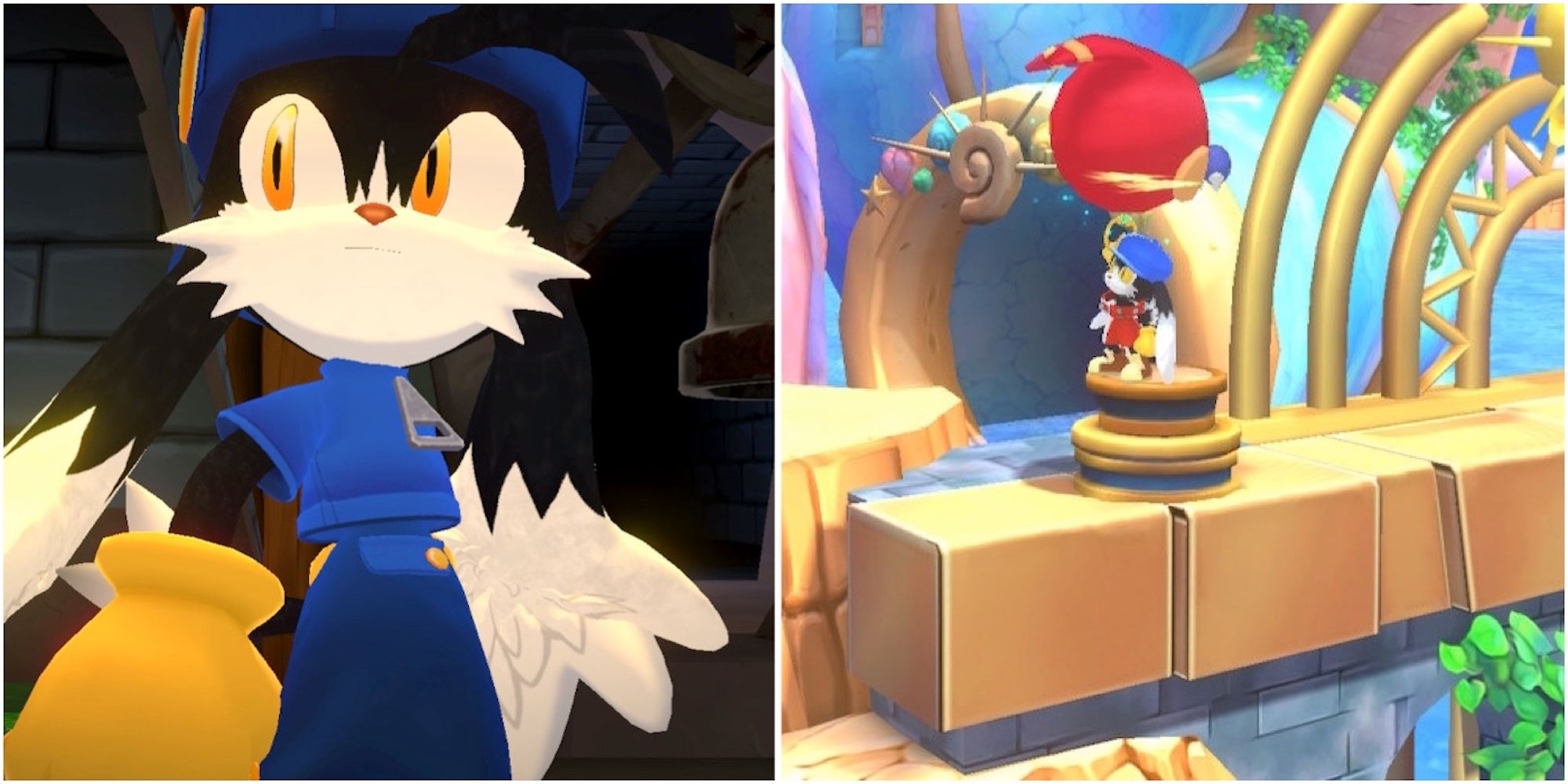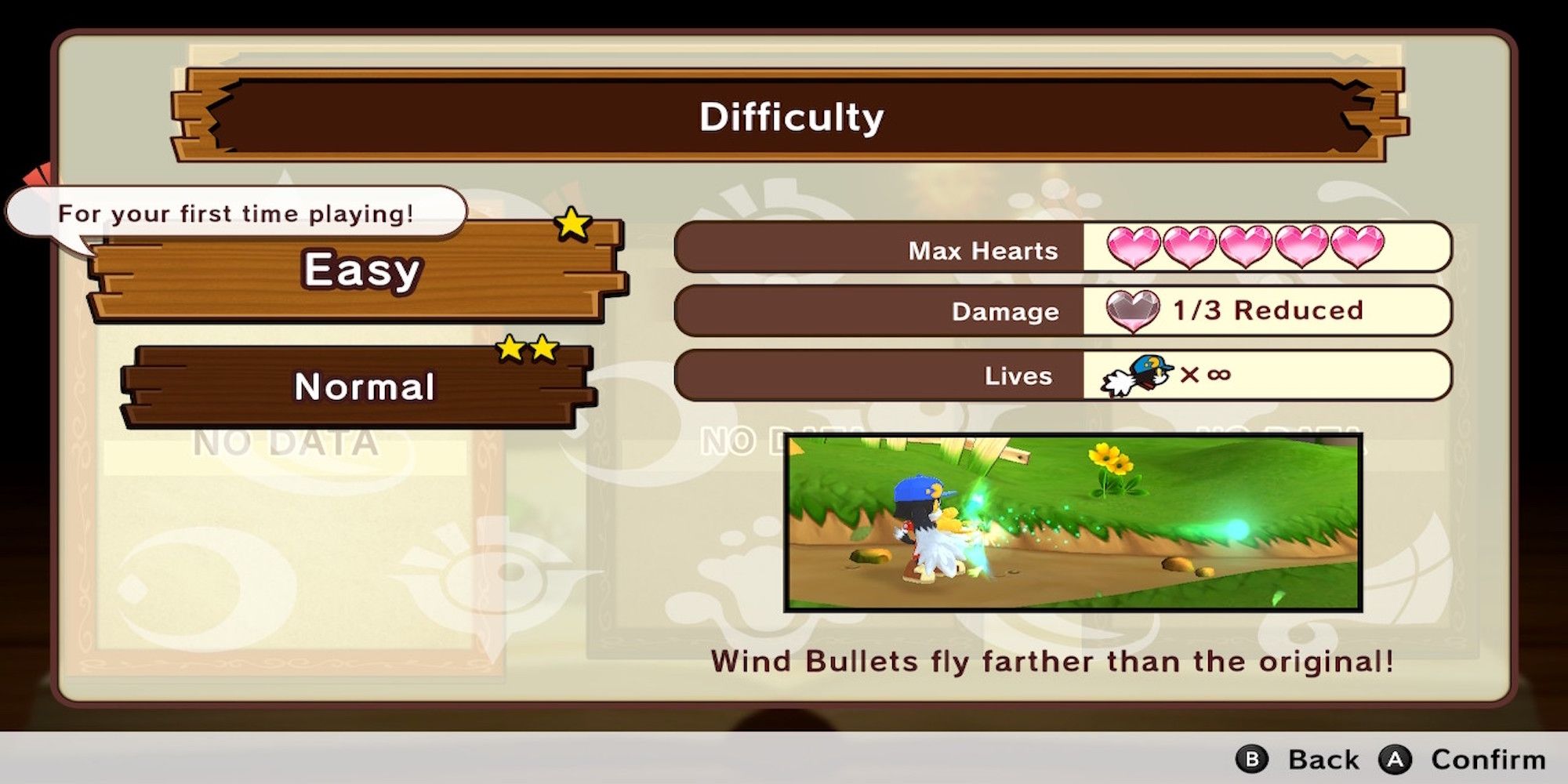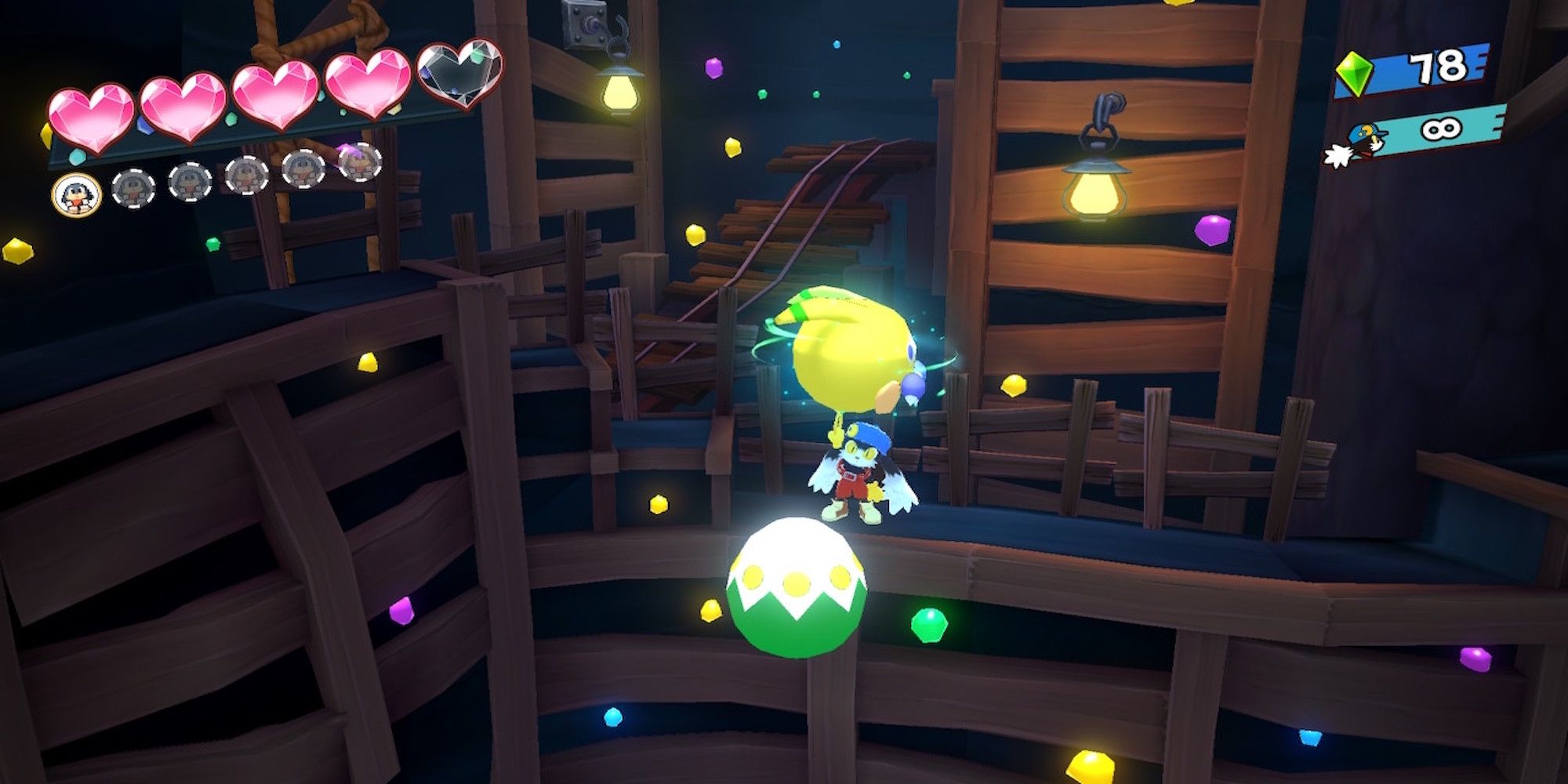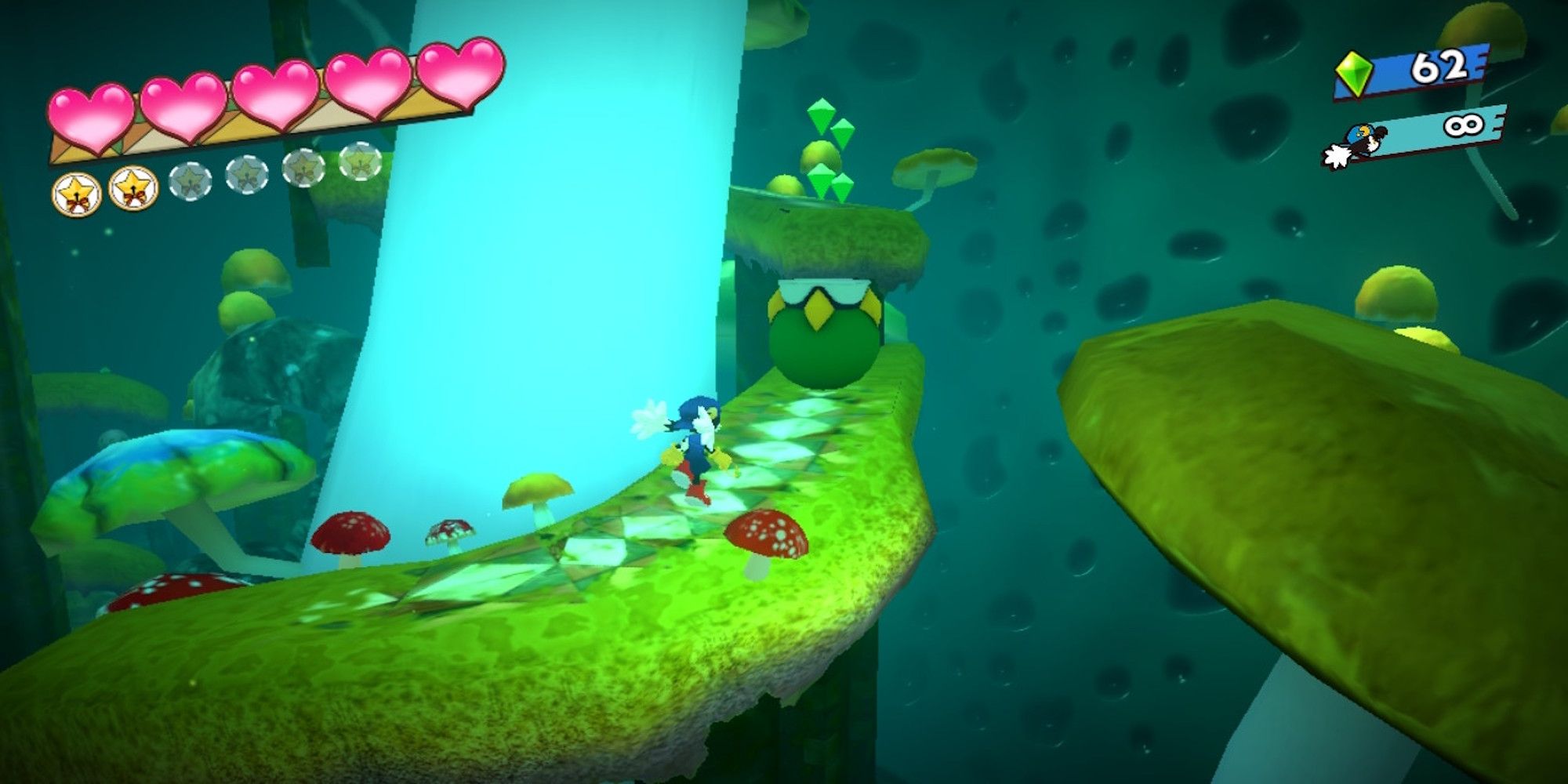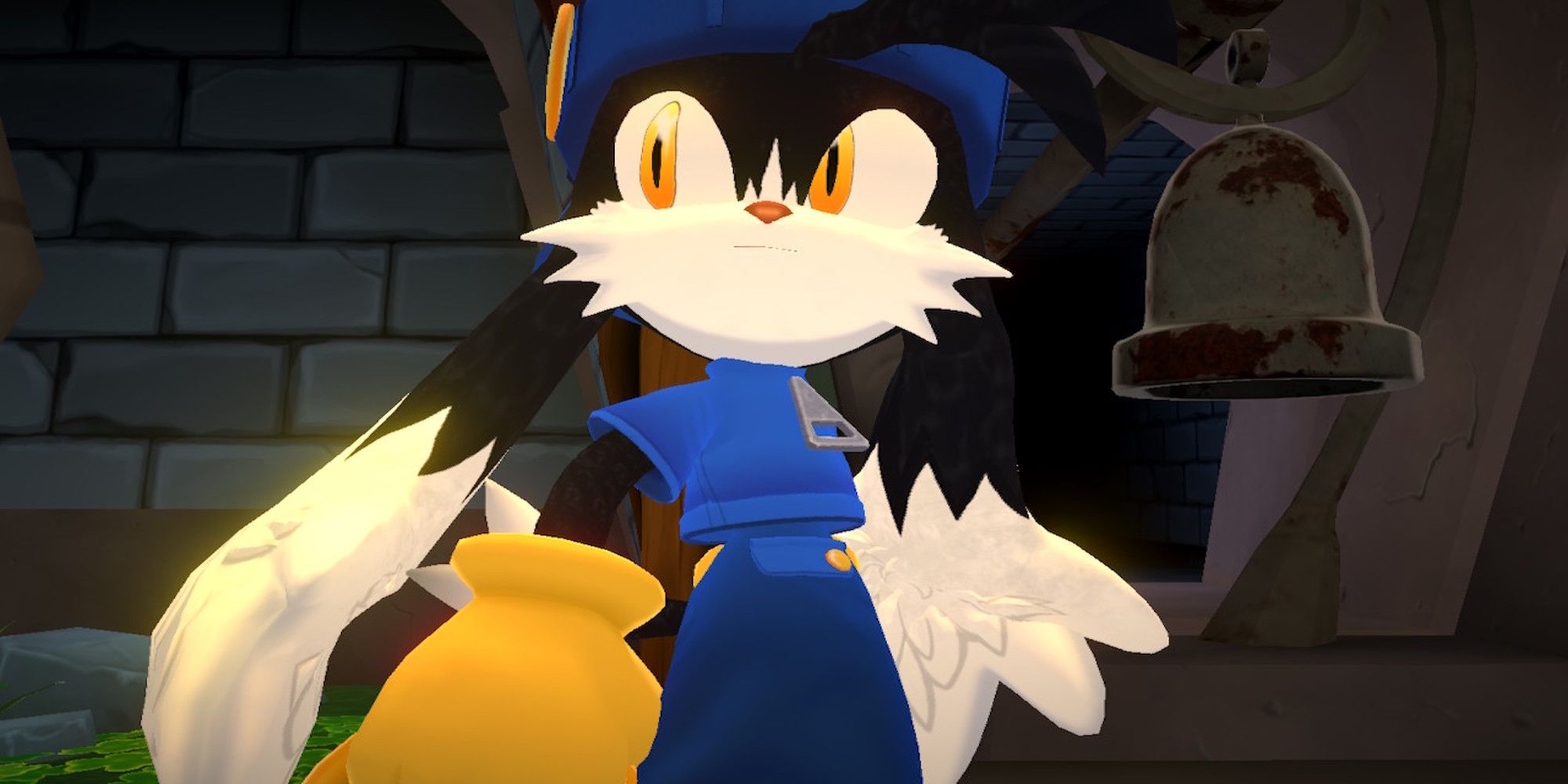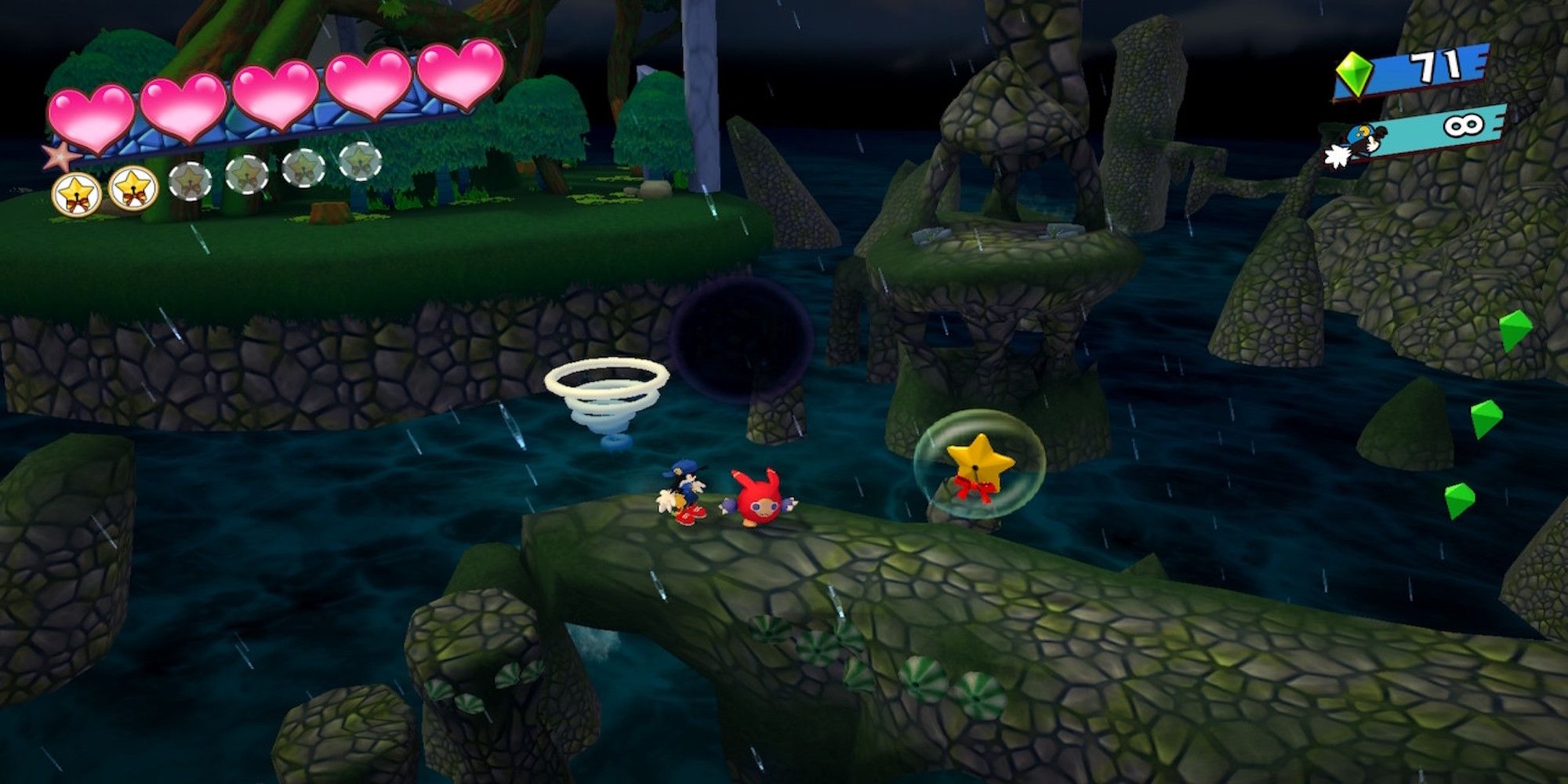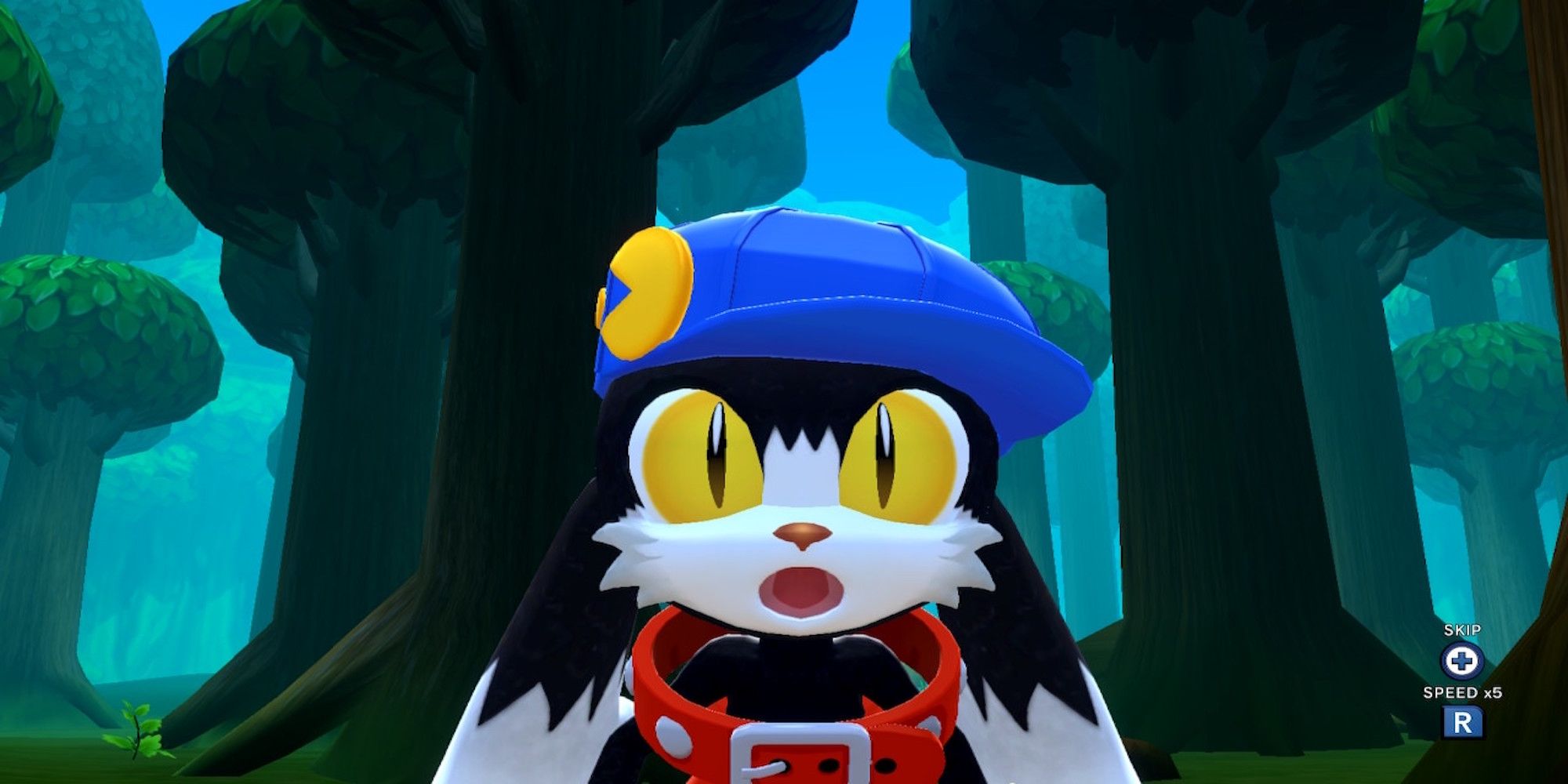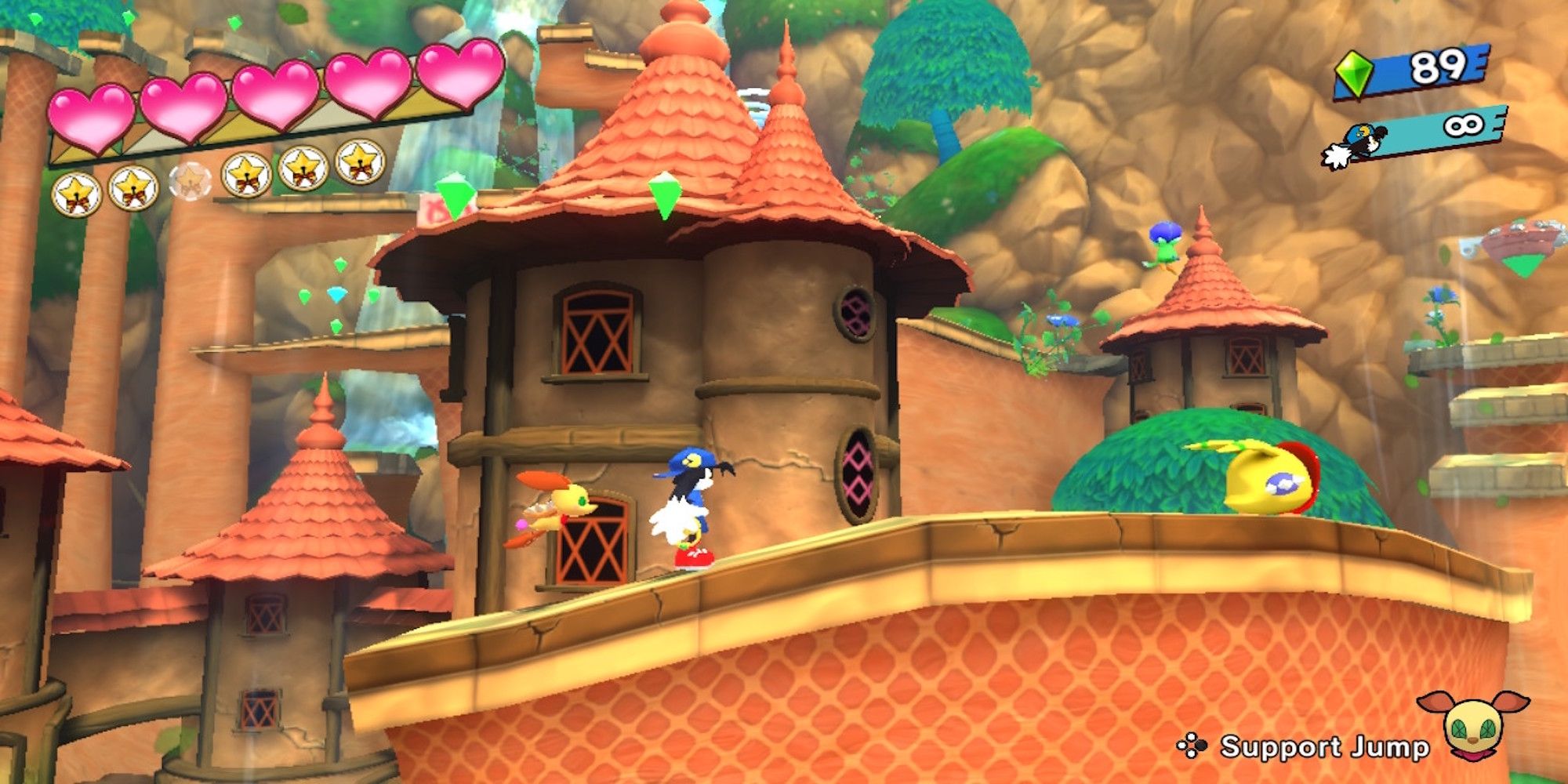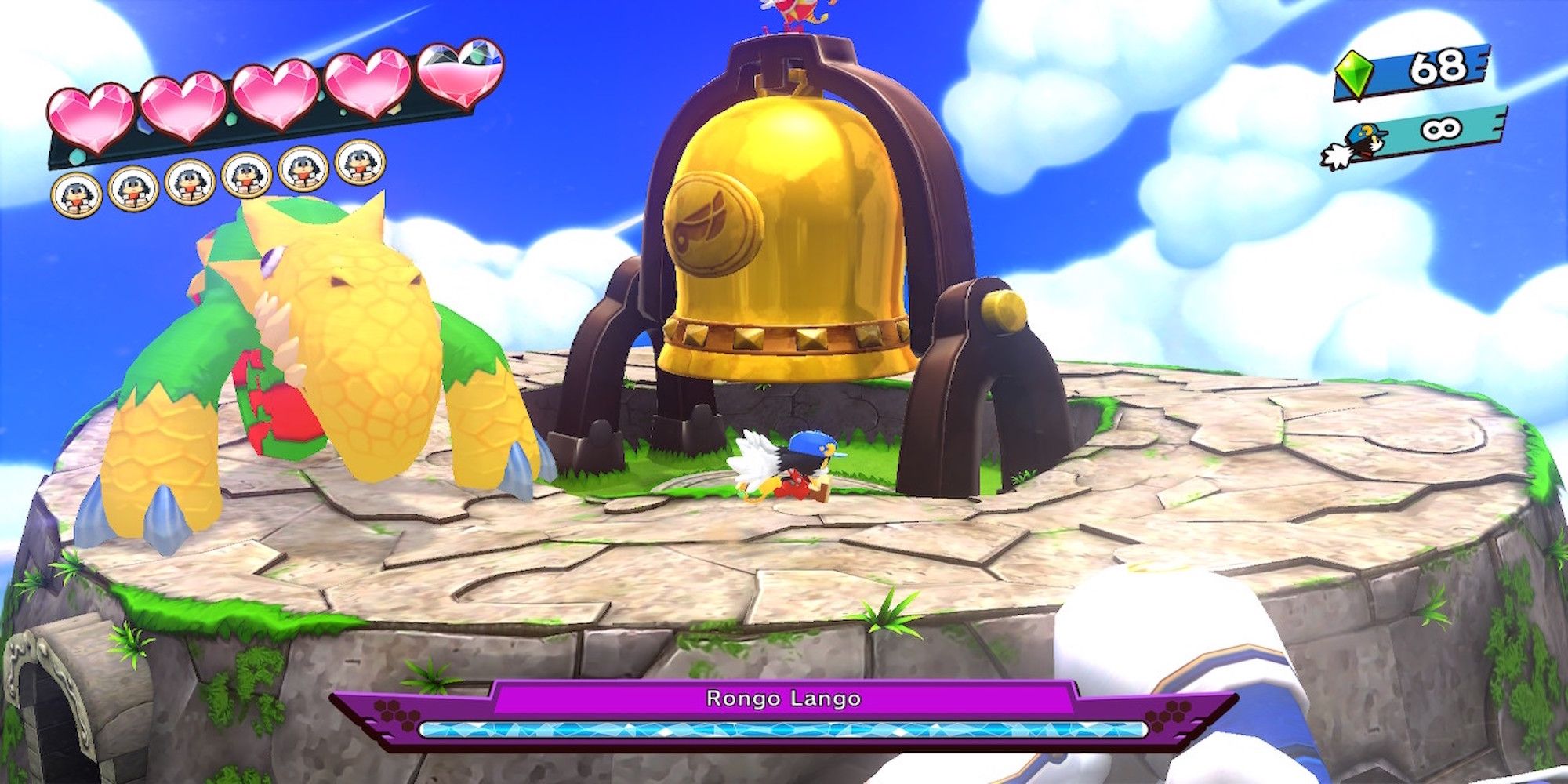Klonoa Phantasy Reverie Series sees a return to a long-forgotten Bandai Namco mascot. The first game in the series, Klonoa: Door to Phantomile, was released in 1998 for the PS1 in North America, which was a year after Japan. The last game in this short-lived series was on the Wii, a remake of that original title, which was in 2009 in North America. This was a year after Japan again, and the title was just referred to as Klonoa. Fans have been waiting a long time to see Klonoa and his friends return.
Was Klonoa Phantasy Reverie Series worth the wait? The answer is always complicated when it comes to HD collections like this. Is it good to play these hard-to-find games on new consoles now? Yes. Would it have been better to play a new game instead? Maybe. Let’s put these questions aside and get to what this collection did and didn’t do right.
8 Best: Easy Mode
Extra lives in platformer games have become a thing of the past in modern games. Both Klonoa games use extra lives, which is not good. However, the newly added Easy mode reduces damage taken from enemies and also grants players infinite lives.
Both games are not that challenging even without this mode implemented. They strike a good balance, but it is also good to remember that not every gamer is as talented as the rest. It’s good to make remastered collections like these as accessible as possible.
7 Worst: Only Two Games
The most important games in this series are here. Several spinoffs could have made this game even better, which is the hope with most remastered collections like Klonoa Phantasy Reverie Series.
A lot of the games have remained in Japan exclusively for years, such as Klonoa: Moonlight Museum and Klonoa Heroes: Densetsu no Star Medal. Klonoa Beach Volleyball, for the PS1, did make it to Europe as well, but it never came to North America. The PS1 version of the original game isn’t even in the collection, which is a real shame.
6 Best: The Platforming
The platforming is as solid as ever in both games. It might take a few tries to get used to Klonoa’s float ability. Sometimes it is easy to judge jumps and floats, while other times, it seems like the float ability has lost power.
Even with that hiccup, most players should be able to pick up on the mechanics right away. The jumping is great, but so is the action for a platformer. Being able to grapple enemies to then use them as an extra boost for jumps or as weapons is still a cool idea.
5 Worst: Missing Standard Collection Features
A few other features are missing in Klonoa Phantasy Reverie Series that a lot of other remastered collections have. This goes beyond the lack of games in the bundle. There are no extras of any kind to access right away.
There is no music or art galleries or even a way to rewatch the in-game cutscenes. Having all of those things in here would have made it feel like a celebration. A way to watch old ads and trailers would have also been a good idea.
4 Best: The Art Style
The graphics do look better as the games have been upgraded to 4K visuals with 60fps. Even without those bells and whistles, the art style of both games holds up.
Klonoa, as a character, has a cute design with his fuzzy hair and long ears that allow him to fly. Admittedly, Klonoa does look better in the second game without that spiked collar which looks goofy in HD. The brightly colored visuals make these games more inviting than even some of the most modern platformers.
3 Worst: No Voices
Both games originally featured gibberish in place of real voice acting in the cutscenes and extra dialogue moments. That has not changed for Klonoa Phantasy Reverie Series. Adding voices for both games would have improved the appeal, but reading text in a video game is not the end of the world.
There are plenty of platformers that don’t have any voices whatsoever and are still great. Rogue Legacy 2 is not a straight platformer, but there is plenty of dialogue, making it a prime example. Still, it’s hard not to imagine a world where this collection did have voices. Bandai Namco presumably has the cash to spend on voices in their budget.
2 Best: Co-Op
The Easy mode is not the only assist feature this collection added to these games. Players can also enjoy co-op, which is not that robust, admittedly.
A second player can take control of Klonoa’s buddies and essentially give the fuzzball an extra boost for jumping. It’s not so much a full-fledged co-op mode as it is an extra power-up. Still, it is nice to have a way for someone watching to engage in the game on some level. This can easily be called little brother or little sister mode, and that’s not meant to be an insult.
1 Best: The Boss Fights
Every boss fight in Klonoa Phantasy Reverie Series has different strategies to them. They all fall under the basic concept of grabbing smaller enemies and throwing them back at the bosses. How players have to do this is what changes, though. The first boss in the original game can only be struck from behind, while the boss after that involves a two-part process. They’re not the most ingenious boss setups akin to Metal Gear Solid, but they are good for platformers.
Klonoa Phantasy Reverie Series was released on July 8, 2022, and is available on PC, PS4, PS5, Switch, Xbox One, and Xbox Series X.

